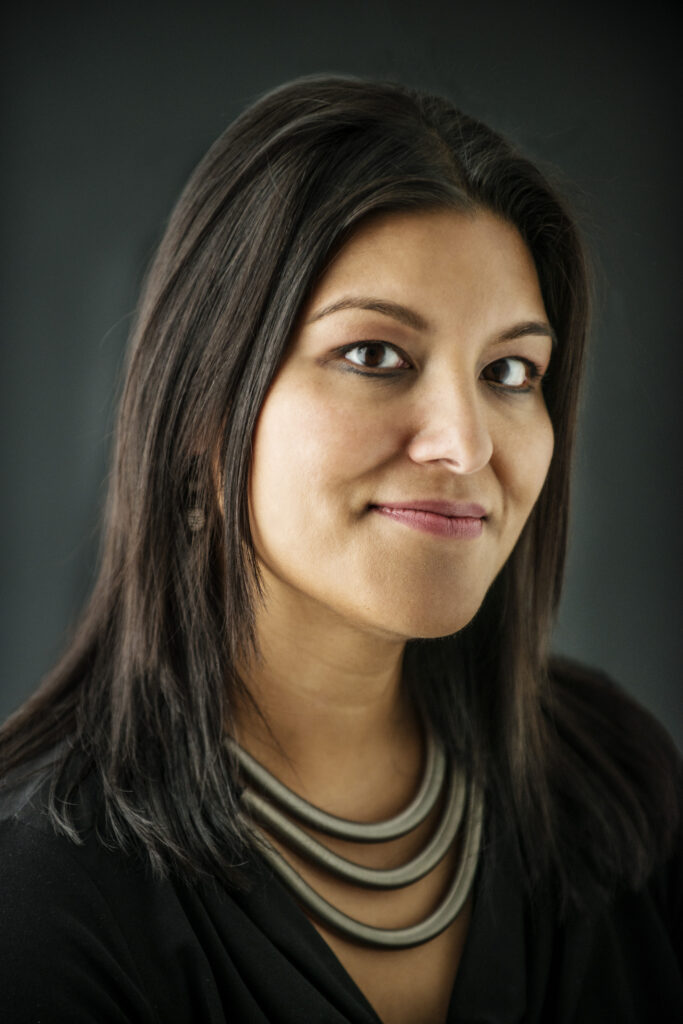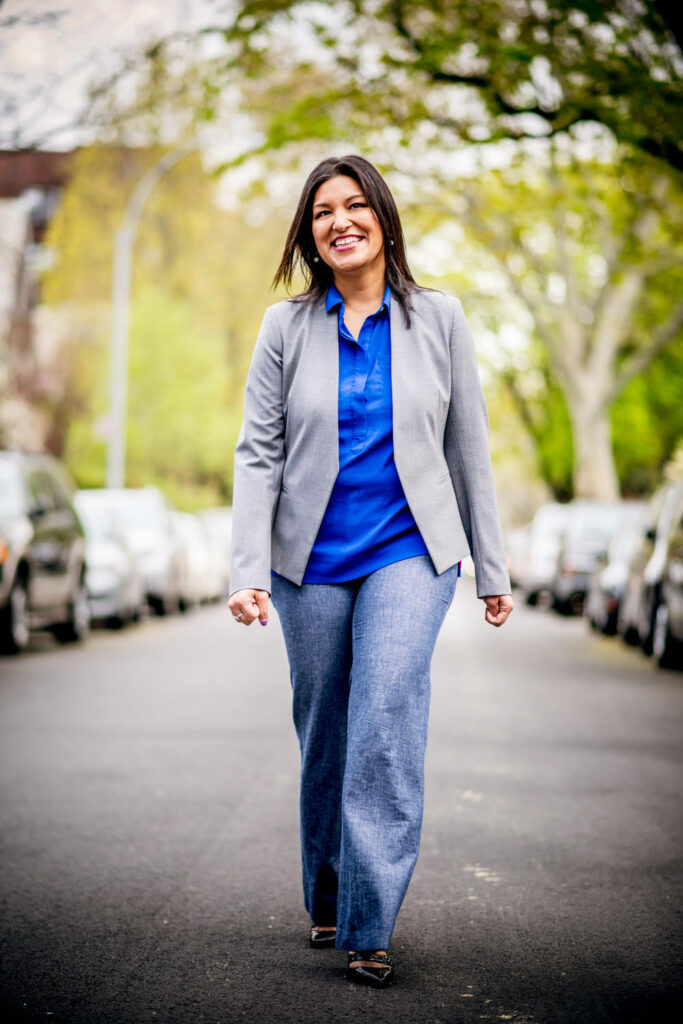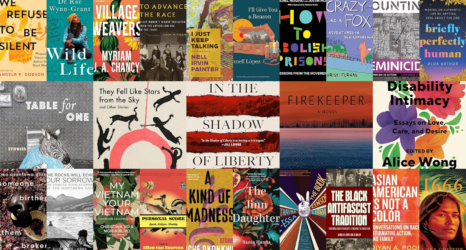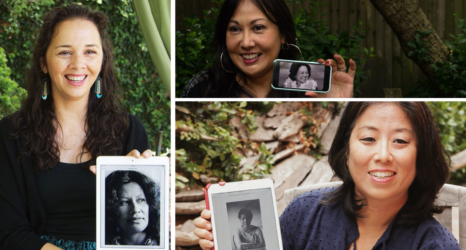Women journalists have always been at the forefront of change—so as the U.S. faces compounding crises, it’s no surprise that women journalists are stepping up to bring truth to the public.
During Women’s History Month 2021, the International Women’s Media Foundation and Ms. began spotlighting women journalists who are making the news media stronger, more diverse and equitable. But their work didn’t end on March 31—and neither does ours. Change starts with recognizing the people behind the byline. All year, join us to learn The Story Behind Her.
This Week: S. Mitra Kalita
This week, meet S. Mitra Kalita—CEO and co-founder of URL Media, a network of Black and Brown media organizations; and publisher of Epicenter NYC, which Kalita describes as a weekly newsletter “created to get my beloved community through the pandemic.”

I am a journalist, but I’m also…
a mother, daughter, wife, neighbor, friend, Assamese, Indian, South Asian, Asian, American, American, American.
What gaps do you see in the journalism industry? What was the catalyst for your work?
I got into journalism as a result of the movement to diversify journalism. I say that intentionally and apply that to my career intentionally. This wasn’t an accident. I was part of a movement born out of the Civil Rights Movement and, more specifically, the Kerner Commission Report recommendation to change newsrooms as we know them so that we could change journalism as we know it.
When I was 16, and was a Dow Jones intern, I spent two weeks in a workshop structured around helping you figure out how you’re going to be a part of this change we need to see in media. Decades later we still are contending with a lot of the same issues; we are not telling the story from the perspectives of all our audiences. There is this imposed narrative or an imposed structure that raises questions like “Whose story is this? In whose voice are we telling it?”
The current gap I am working to fill is one of creating service and articulating value to our audiences. Our instinct is to gather information and create output in the form of an article, a video, a podcast, a newsletter. I am trying to rethink and redo 21 years of such robotic behavior and really listen to what’s needed, what are the gaps I can fill, and how do I continue a dialogue with my community on how it’s going, what more is needed and how we can define success.
An example of this from Epicenter’s current vaccine efforts (we have registered 2,500 people for their shots, mostly the elderly, restaurant workers or people in Queens, some all of the above!) is that we realized many people need help securing documentation such as letters attesting to their eligibility. We could do a story on that being a problem, or we can do a public drive with all sorts of templates for letters available for download. We did the latter (although mention it in stories and tweets).
How do your identities shape your reporting? When did your intersections help you report better or help you approach a story differently?
On 9/11, while on staff at Newsday, I jumped out of the dentist chair in Jackson Heights, Queens, where I live, as soon as the hygienist said this was a terrorist event. No one’s cell phone was working; the subway had shut down. I was in line at the pay phones, waiting to talking to my editor and interviewing people in Spanish, Bengali and English.
The newsroom’s initial mandate was that I get to downtown Manhattan, so I started walking toward the Queensboro Bridge. I started seeing Bangladeshi butchers shuttering their shops. People are crying. A van of Muslim men turns on a car radio and one of them says, “This is going to be terrible. This is going to be just like 1993” after the first World Trade Center attacks.
After an hour, I’ve only managed to move three blocks away from that pay phone. I called my editor again: “Do you have any of this context, this reaction from both New Yorkers and the world? Because that part of Queens reflects the world.” Latinos are suddenly worried about tighter immigration. And Bangladeshis are worried about being targeted because they’re Muslim. I called in and asked, “Does anyone have this?” And my co-worker Katia Hetter said, “Not like you do.” So, that became much of what I covered for the year.
You cannot write about race in a vacuum, or about identity as something separate from the news story. If we separate race and gender from the stories that allegedly have gravitas—and I’m not saying race and gender don’t have that on their own—we’re not doing our jobs.

What is unique about being a founder and creator in this particular moment in time? (i.e. in the midst of so many compounding crises)
Everyone is in the middle of massive reinvention right now. And if newsrooms are not, they are doing something wrong. That is an incredible opportunity for me to test and learn, take risks. I am working a crazy number of hours per day but I feel grateful that my family is here with me (physically close, even as we are all on screens) and that my two girls feel so much more vested in my businesses and their missions than anything I have done before.
I also am writing and editing more than previous chapters of my career. This feels like a chance for me to reinvent form, take more time and care with, say, interns. There’s a lot of freedom for me to embrace new ways to get messages out there, Clubhouse to newsletters, mentoring to panel discussions.
How does your community lift you up? How do you lift up others in your community?
This is the cornerstone of my life and work so it’s kind of hard to answer. I think my community has enabled everything. Throughout my life and career and child-rearing and parental health woes and all the vicissitudes, I have never felt not supported or loved, nourished or advised (sometimes too much!). I will spend my whole life paying it forward.
Who’s in your ideal group chat?
The most active is my neighbors, our ride-or-die squad of desi journalists/artists/professors/lovers of Jackson Heights.
Up next:





